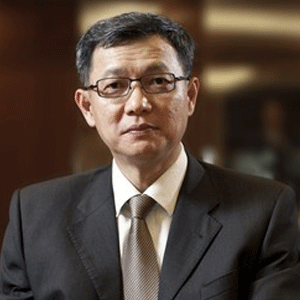THANK YOU FOR SUBSCRIBING

Caroline Hsu, Chief Marketing Officer, Appier
It’s hard not to get excited about mobile, especially in Asia. After all, it is common knowledge that Asia is on the forefront of the global shift to mobile. We are the world’s first “mobile-first” region, home to millions of people who have leapfrogged desktop to come online for the first time on mobile. Most of the countries in the world where smartphone penetration outpaces PC — including Thailand, Singapore and Hong Kong — are located in Asia too.
So it’s small wonder that the excitement around mobile here in Asia is infectious. Indeed, for many businesses, it’s a short leap to conclude that mobile is a better bet than desktop entirely. And among marketers, the number of voices calling for a “mobile only” strategy is growing.
"In the post-mobile world, people use all screens,in complex and interconnected ways "
But the data tells a different story. The fact is, mobile first doesn’t mean mobile only. While it’s true mobile is booming, PC continues to play a significant role in the daily lives of consumers across the region. For example, Appier data shows that — unsurprisingly — the number of mobile phones in Asia far surpasses the number of tablets and PCs. However, looking at usage per device type, that is, the total volume of usage coming from mobile phones, tablets, and PCs respectively, it’s clear that PC punches far above its weight. We found that PC generates more than 50% of the volume of
So what’s going on? Most of us have imagined the mobile revolution as a one way shift, from PC to mobile, as people abandon Macs and Lenovos in favor of Samsungs, iPhones, and Xiaomis. The reality has turned out to be much more complex, even in aspiring markets where PCs ownership is less widespread.
The fact is, Asians aren’t just mobile — they’re post-mobile. And a key feature of the post-mobile era is cross screen, where consumers move between smartphone, tablet and PC throughout the day. Mobile only users are not a majority. For example, a recent report found that even in Southeast Asia and India, only about half of mobile device users use this as a primary (but not the only) device to access the internet; at the same time, the other half continues to rely primarily on other screens, such as PC. This trend is even more evident in developed markets, where the proportion of users who use mobile as their primary device is even lower — such as Australia (23%), Japan (33%), Singapore (35%) and my native Taiwan (28%).
In the post-mobile world, people use all screens, in complex and interconnected ways. Which screen they choose at any given time depends on a complex array of factors, including individual preference and habit. Some activities occur frequently or even primarily on mobile, such as social networking. For others, such as online shopping, PC predominates: in Q4 2015, 3 in 4 transactions for online retailers in India, Indonesia, Malaysia, Philippines, Singapore, Thailand and Vietnam occurred on PC. And for others still, such as online banking or educational activities, the split between mobile and PC appears roughly equal.
What this means for marketers is that it’s too early to write off PC. A shopkeeper in, say, Malaysia might notice that credit card ownership is on the rise — and that more people than ever want to pay with credit cards — but few of us would suggest she go credit-only and decline cash payments at the register. Similarly, marketers need to reach users across all screens, including mobile, tablet and PC.
This isn’t just common sense. It makes good business sense, too: our data shows that cross screen campaigns perform single screen campaigns by a significant margin. Either way, with device ownership on the rise around the region, marketers ignore this sea change in consumer behavior at their own peril. After all, mobile first doesn’t mean mobile only.












